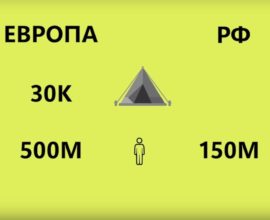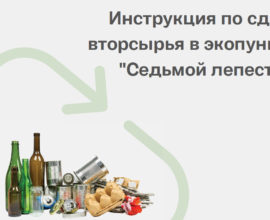Interview with Heather Sage
Interview with Heather Sage
Director of Community Projects, Pittsburgh Parks.
How to use stormwater wisely, how to raise money for eco projects,
how to make businesses more responsible and where we can seek
for green technologies.

Heather Sage is responsible for working collaboratively with community partners on new and ongoing projects within the parks, providing project management and serving as a liaison between Pittsburgh Parks Conservancy and project stakeholders. Sage manages government affairs, foundation relations, and community engagement opportunities, focus- ing on expanding ways that park volunteers, patrons and supporters can further grow the Parks Conservancy mission and continue to enjoy the multitude of healthy, economic, and recreational benefit from their parks.
Heather: Sewage1 pipes2 in the United States were originally designed to carry waste and rainwater/runoff3 from streets, etc. Unfortunately, more and more pavement4 and hard surfaces5 in cities have resulted in sewer systems6 that regularly overflow with sewage and pollution7 during rain events into streams and rivers, causing pollution7. Even in places where more modern waste water systems8 were designed that separate out stormwater9 runoff3 flows from sewage1 waste flows, these rainwater pipes are often undersized for increasing amounts of rainfall and storm volumes. This is one reason why the idea of using green stormwater9 infrastructure, where natural, ecological systems are put to work in managing stormwater9, is needed.
So for example, a lot of people in America have lawns10, and the grasses that are above ground, that you see on top that height of the grass (showing with her hands) is about the depth of the roots in the soil. And so, when it rains, the lawns10 are not very good at, actually, soaking up11 water. The water just tends to kind of roll off12 of the lawns10 and, you know, go into the pipe2 system, or the stream, or the road or whatever. Even though it’s green, it’s not necessarily taking up the water. So with green storm water infrastructure techniques, landscape designers, that really understand plants, can use both — soils that are really good at absorbing13 water, and plants that have really deep root systems14. So, when that water comes to them, they can actually capture the water and hold on to15 it and slow things down significantly16 and keep it from, you know, getting into the sewer infrastructure.
Vlad: So, it’s interesting how is it possible to finance such a big sector of ecology? How did you find sponsors for these ecology events and facilities?
Heather: It’s a great question. So, we rely heavily on philanthropy17, rely on making organizations that are formed, where someone, that once had a lot of money, forms a foundation18, and they literally just exist in order to give money away. There are sometimes public sector grants. So, grants, that come from the government at different levels. And we just try to be smart about, you know, figuring out19 who may be interested in doing this. But in some cases20, what we have been able to do is to move forward an environmental law, that is dealing with water quality issues21 (in fact, there are many water quality laws) and because the city needs to comply22 with that law, they know that they have to either do it in sort of a “gray way” or a “green way”. And if we were able to explain to them, how doing it in “a green way” makes sense and how we have other benefits23, they may be able to satisfy their requirements24 under the law through a project, that we collaborate on25. And so everybody wins because we may get a more beautiful park, we may get storm water management and they’re getting better water quality which the government is telling them they have to have anyway. And so they’re willing to put funding into a project to make it happen, rather than doing26 a project in a different way without green storm water infrastructures. So, it’s really just about kind of being strategic and finding partners that have different reasons for investing in that project. And the private sector in the United States, some cities have requirements24, that if you’re making storm water, in that sense, you’re making waste water, you actually have to pay for how much you’re making. So, you know, when we turn on the tap when we drink our drinking water, we have a meter and, you know, say we use X gallons of water that month, we pay a bill27 for that. We pay a bill for how many times we flush the toilet28 or, you know, empty the dishwasher or whatever29. But if you have a big parking lot or if you have a big giant roof and you’ve got lots of rain water running off of it, and in many cities you don’t pay anything for that, it’s just sort of the cost of doing business30 for the public… The public ends up paying for it in other ways, and many cities are now charging31 businesses or property32 owners a fee33 for creating that storm water and that fee goes to the budget. It’s in a way a carrot or an incentive34 for those places not to create as much storm water in the first place. So that way, their fee33 will go down35. So they may begin to create you know…
Vlad: Special parks…
Heather: green roofs, parking lots.
Vlad: … with the drainage system, yes?…
Heather: Exactly!
Vlad: … the drainage system is really great. So, do you think we have the all technology needed or it’s really new and it’s really hard? Maybe you have a copyright36 on this thing…
Heather: There’s no copyrights37. No, I mean, there’s, uhh… it’s widely available and widely used. I think the things that need to be studied carefully are just soil types and vegetation38 types, that are successful, but the concepts are very easy to understand and use, and there are a lot of landscape architects and other professionals that are really specialising in this work around the world, you know, closer than the United States, there’s a lot of this work happening in the Netherlands and, you know, other countries in Europe, and they’re really focusing on this. So, I know a lot of landscape architects in the United States have actually come to Europe to learn some of these techniques and brought it back to us, so there’s a lot of that exchange happening and I think it’s not really rocket science, so that’s really like major technology. It’s just kind of a different approach39.
Vlad: Interesting. And how much do you pay? I mean, how much does it cost to make this? For example, imagine that we would want to make a parking lot40, for example, for 100 square meters. How much will it cost to make it?
Heather: It depends… I mean, it’s not a question that I can just answer exactly.
Vlad: Just approximately41.
Heather: I can’t even approximate it. I mean, it’s just really depends on the situation. It depends on what type of pavement42 you wanna use, what the plant, the composition is. There’s like a…
Vlad: A variation?
Heather: Rght, yeah. A variation.
Vlad: …a variation from how much to how much?
Heather: I don’t know…
Vlad: Yeah, but anyway. It’s possible to find this information online, yeah?
Heather: Yeah! It’s not a problem… well, sometimes it does not necessarily make sense to do a really big green infrastructure project because you have to look at what the cost is to treat the water and sort of back your way from that cost and understand, well, would it be simpler, would it be less expensive to do it in a more traditional way. But in many cases, when you’re able to calculate the other benefits43, that you’re getting from that project, you see the difference. I don’t know if you remember my presentation, I had a chart44 where we’re showing increased property values, increased recreational values, increased carbon reduction45, etc. When we look at that type of full cost accounting, which, I mean, in the United States we don’t often do it that way. We just sort of look at, you know, one number and not all of these other benefits43. But when you begin to look at those other benefits43, suddenly46 green infrastructure is much more valuable.
Vlad: Efficient47…
Heather: Yes, exactly.
Vlad: Heather, thank you a lot for this interview
Glossary
1. sewage [‘s(j)uːɪʤ]/ waste water – сточные воды
2. pipe(s) [paɪp] труба, трубопровод
3. run-off – ливневые или дождевые стоки
4. pavement [‘peɪvmənt] тротуар
5. surface(s) [‘sɜːfɪs] поверхность
6. sewer [‘s(j)uə] system – канализационная система
7. pollution [pə’luːʃ(ə)n] загрязнение
8. waste water system – система сбора и отведения сточных вод
9. stormwater – ливнёвая (дождевая) вода
10. lawn(s) [lɔːn] лужайка
11. soak up [səuk ʌp] впитывать
12. roll off – скатываться вниз




